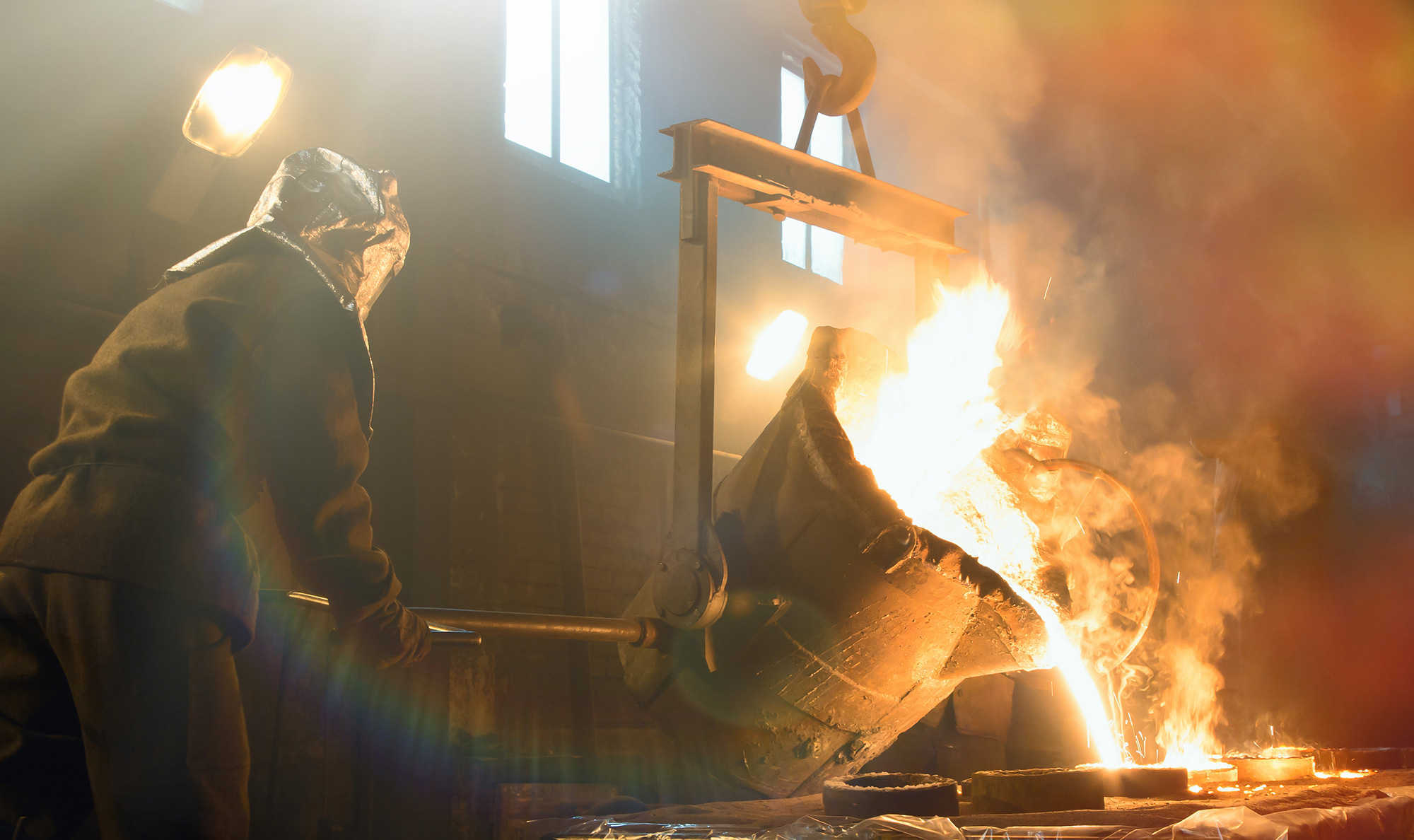Scottish Chemical Company Fined £100,000 for Causing Workplace Burns
Posted on

A chemical company was penalized £100,000 for causing an employee to sustain workplace burns — resulting in permanent scarring — from a steam hose in Motherwell.
On October 23, 2019, a 23-year-old employee of Dundas Chemical Company (Mosspark) Limited suffered burns on his back and other body parts while cleaning a process water tank. He had been working at the Omoa Works site in Newarthill for approximately two years prior to the incident.
Through its large rendering plant, the company utilizes animal and food industry waste to create proteins, fats, and oils for the oleo chemical, fuel, and feed sectors. Due to this operation, periodic cleaning of the water tank and vickery becomes necessary.
During a night shift, the man was tasked with cleaning the process water tank, vickery, and surrounding walls and floors. The company supplied pressure washers and a steam hose to assist in removing stubborn tallow or animal residues. The unwieldy steam hose and its unenclosed nozzle posed a challenge to manipulate. As a result, the man and his coworker took turns completing the task with it. After a while, they took a break. While his colleague moved on to other tasks, the 23-year-old continued with the cleaning on his own.
Utilizing a small cherry picker, he attached the steam hose to its basket. Once raised to the necessary height, the steam hose and nozzle rotated and released steam directly towards him in the cherry picker. To avoid being burned, he swiftly turned and adjusted the nozzle away from him. Lowering the cherry picker’s basket, he was then able to quickly make his way to one of the deluge showers for cooling relief from his injuries. As a result of this incident, he sustained scars on various parts of his body from steam burns. Scars which have endured to this day. He was promptly taken to the hospital for treatment.
According to the HSE’s investigation, the nozzle on the steam hose lacked a trigger or other means for the operator to control the flow. Additionally, it was discovered that the hot water supply for cleaning was not properly maintained, and the supervisors were aware of this issue but did not take any action.
Furthermore, it was discovered by HSE inspectors that the maintenance and engineering team lacked a strong understanding of the potential hazards associated with installing and operating the wash down system. The lacked knowledge of the appropriate measures to minimize or manage these risks. The company also failed to provide any documentation related to the upkeep of the valve, hose, or nozzle.
Dundas Chemical Company (Mosspark) Limited, located in Brasswell, Dumfries, admitted to violating section 2(1) of the Health and Safety at Work etc Act 1974 and was subsequently fined £100,000 by Hamilton Sheriff Court on August 18th, 2025. HSE inspector Ashley Fallis said:
“Had a safe system of work been in place, then this incident would not have happened. The lack of appropriate risk assessment, method statements, training, and supervision for both the maintenance team who installed the valve, and the operators tasked with using the system, led to a situation where those involved were unaware of risks or simple control measures. This catalogue of failures resulted in a young man sustaining very serious burns, to which he still bears the scars to this day. We will not hesitate to take action against companies that fail to protect their employees.”
Causes of Workplace Burns
Burns in the workplace can happen when you least expect them and can stem from various sources, each posing a unique risk of personal injury.
One of the most common culprits is hot liquids. Spills from coffee machines or boiling pots can lead to serious injuries in an instant.
Another frequent cause involves chemicals. Many industries use substances that can ignite or scorch skin upon contact. Proper handling and storage are essential to minimize these dangers.
Electrical equipment also contributes to burns. Overloaded circuits or faulty wiring may result in shocking encounters for unsuspecting workers.
In kitchens and manufacturing settings, open flames become a significant hazard as well. Grills, ovens, and torches are commonplace but require vigilance to prevent accidents at work.

Friction burns occur when skin rubs against surfaces at high speeds—think of heavy machinery without protective barriers. Awareness of these risks is vital for fostering a safer work environment for everyone involved.
Understanding the causes of workplace burns not only helps employees stay safe, but also fosters a culture of awareness and prevention among employers.
Types of Burns and Their Severity
Burns are classified based on their severity, which helps in determining the appropriate treatment. The first type is a first-degree burn. This affects only the outer layer of skin, causing redness and minor pain.
Second-degree burns penetrate deeper, damaging both the outer and underlying layers of skin. These may result in blisters and significant discomfort.

Third-degree burns go beyond surface damage. They can destroy nerves and tissue, resulting in a waxy or charred appearance. Pain might not be present due to nerve ending destruction.
Fourth-degree burns are the most severe. They extend through all skin layers into muscle and bone. Such injuries require immediate medical intervention as they pose serious health risks.
Understanding these types assists workers in recognizing injury severity after being burned at work. Swift action often leads to better outcomes for those impacted by workplace burns.
Workplace Burn Prevention Tips
Creating a safe workplace starts with awareness. Employers should conduct regular safety training sessions focused on fire hazards and burn prevention. This equips employees with knowledge about potential risks.
Proper labelling of hazardous materials is essential. Clear signs can guide workers in avoiding dangerous areas or substances that could lead to burns.
Investing in appropriate protective gear is crucial for those working in high-risk environments. Items like gloves, aprons, and face shields mitigate the chance of serious injuries from heat sources. Of course, fire extinguishers should be present regardless of the severity of risk, and are common even in office settings.

Encouraging open communication also plays a vital role. Employees should feel comfortable reporting unsafe conditions without fear of retaliation.
Maintaining equipment can prevent accidents too. Regular inspections ensure machines function correctly and safely, minimizing any risk associated with faulty tools or appliances leading to workplace burns.
What to do in the Case of Workplace Burns
If a worker is burned, the first step is to assess the severity:
- For minor burns, immediately cool the area under lukewarm running water for about 10–15 minutes. This helps reduce pain and swelling.
- For larger or more severe burns, avoid using ice as it can cause further damage. Cover the burn gently with a clean cloth or sterile bandage to protect it from infection.
Seek help right away if blisters form or if there’s deep tissue damage. Never pop any blisters; this increases the risk of infection.
It’s essential to report the incident to a supervisor promptly so that proper documentation occurs, and necessary workplace safety measures can be reviewed. Encouraging employees to stay calm during emergencies plays an important role in managing stress and ensuring safety protocols are followed effectively.
Contact Us if You Have Sustained a Burn in the Workplace
If you have sustained a burn in the workplace, our experienced solicitors ** will work tirelessly to help you recover from your injury and obtain the compensation you deserve, on a no win, no fee * basis.
Contact us for a free consultation today on 08082391859^.
« The Dangers of Working at Heights: Lessons from a Flat Roof Fall
Life-altering Crush Injuries at Work Sees Worcester Waste Management Firm Penalized »

